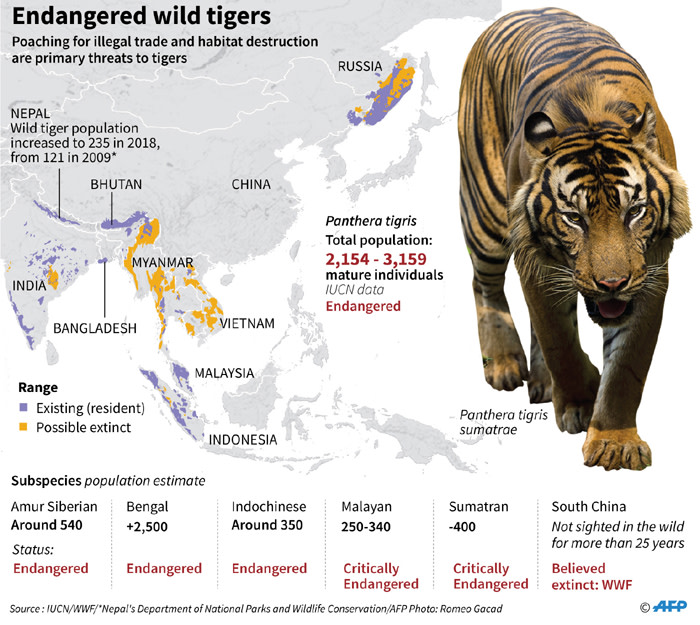Conservationist Warns The Malayan Tiger Species Could Go Extinct In The Next 2 To 3 Years
The iconic species was listed as "critically endangered" in June 2015.
With only 200 Malayan tigers left in the wild, the species could go extinct by 2022, conservationist Dr Mark Rayan Darmaraj warns
We will lose our tigers in two or three years, and I am being optimistic here.
"If we leave things as they are, the Malayan tiger could be driven into extinction even faster. By taking care of tigers, the apex predator, we are also protecting the ecosystem.
"The abundance of tigers is a sign of a healthy ecosystem," Dr Darmaraj, who is fondly referred to as 'guardian of Malayan Tigers' said, as reported by NST Online.
Their numbers have been declining with rapid pace
Their numbers have been declining with rapid pace. The primary threats to the wildlife species are habitat destruction and poaching for illegal trade, according to AFP.
Their population dropped from about 3,000 in the 1950s to less than 500 in 2003.
Following which, the International Union for Conservation of Nature (IUCN) listed the iconic Malayan tiger as a "critically endangered" species in June 2015.
A fact file with data compiled till 2018 on endangered wild tiger population and range in the wild lists Malayan tigers as critically endangered.
Image via EWNGiven how the existing programmes and initiatives had yet to achieve the desired results, he said there was an urgent need to act now for the critically endangered species to stop from going extinct
In 2009, Malaysia's National Tiger Action Plan was launched with the resolution to double the number of Malayan tigers. The number? To make it 1,000 by 2020.
However, according to Dr Darmaraj, there have been at least a 50% decline in tiger numbers in Peninsular Malaysia's Belum-Temengor Forest Complex.
The conservationist, who has been working at WWF-Malaysia for the past 14 years, and currently leads the Malayan Tiger Conservation Programme, feels that the government should establish a wildlife crime unit.
According to him, this unit would specialise in investigations and intelligence gathering as there is a lack of coordination between agencies.
Dr Darmaraj believes that intelligence gathering on poaching syndicates which are part of the larger illegal wildlife trade network could ensure that legal action was followed through right from the evidence collection stage to the prosecution process.
"In most reported cases, those who were prosecuted for hunting endangered species could have been working for foreign syndicates.
"Cracking this should be made a priority, apart from penalising those who are guilty of committing wildlife crimes," he was quoted as saying by NST Online.
"There is no time to waste if we want to see the tigers survive"
According to Dr Darmaraj, the government should establish a high-level committee task-force which should be headed by the Prime Minister.
If the committee is headed by the Prime Minister, he could compel relevant agencies and stakeholders to support conservation efforts, the conservationist said.
"In this respect, I applaud the Water, Land and Natural Resources Ministry’s initiative to enrol the army to curb illegal hunting. But this has to be mobilised soon. There is no time to waste if we want to see the tigers survive," he said, adding that wildlife crimes posed the largest threat to the survival of the species and they must be dealt with.
"If the Malayan tigers become extinct, we will be held accountable and answerable to future generations," Dr Darmaraj said, adding that the onus is on us to ensure the survival of our wildlife species
He said that while poaching, which contributed RM23 billion to the illegal wildlife trade every year, had driven the Malayan tiger to the brink of extinction, other factors which added to issue are the scarcity of food caused by loss of habitat.
According to him, efforts such as the breeding of sambar deer, which are one of the main food sources for the Malayan tigers, could ensure the survival of the species.


